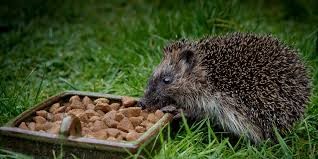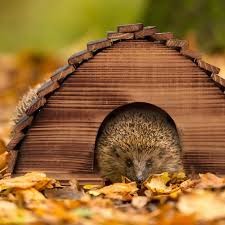Hedgehogs are not just adorable, spiky creatures that capture the hearts of nature lovers, they are also a crucial species for passionate gardeners eagerly awaiting the bloom of their spring plants. With their presence, hedgehogs can greatly contribute to the health of your garden and its ecosystem. In this article, I’ll explain how and why you should welcome these little allies into your green space.
How Can Hedgehogs Benefit Your Garden?
While hedgehogs may appear to be simply cute creatures, they offer much more than charm. These natural helpers can benefit your garden by ensuring the seeds and bulbs you plant thrive and multiply year after year. Hedgehogs assist passionate gardeners by eating a variety of pests, including beetles, caterpillars, worms, slugs, and other invertebrates. These pests can damage your plants, sometimes devouring leaves or flowers, which can ruin a gardener’s day or even an entire growing season. By controlling pest populations, hedgehogs help keep your crops and plants in great health.
How to Attract Hedgehogs to Your Garden
If you want to invite hedgehogs into your garden, creating a hedgehog-friendly environment is easy with a few thoughtful changes:
- Water Access: If you have a pond, make sure it has a gentle slope so hedgehogs can easily drink and escape if needed. Steep-sided ponds can be difficult for them to navigate. Alternatively, leaving out a shallow bowl or plate of fresh water works well, especially during the summer.
- Autumn Habitat: As autumn approaches, consider leaving a pile of leaves and twigs in a corner of your garden for hedgehogs to collect as they prepare for hibernation. But remember to check underneath any wood piles before lighting a bonfire; unlit bonfires often provide an ideal hiding space for hedgehogs!
- Garden Access: One of the best things you can do for hedgehogs is to give them free access to your garden. Litter is a significant hazard to hedgehogs, as they can get their heads stuck in items like tins, plastic bags, drink can binders, or discarded yoghurt pots. Slug pellets and pesticides, while commonly used to kill pests, can also poison hedgehogs. If possible, avoid these chemicals and instead try natural alternatives like crushed eggshells or coffee grounds to protect your plants.
- Hedgehog Highways: To make it easier for hedgehogs to roam, create small holes (about 12×12 cm) in the bottom of your garden fence. If you have a larger garden, consider making several holes. Raising your fence by around 7 inches will also help attract hedgehogs. Additionally, trimming back shrubs and bushes against your fence will create space for them to roam. These “Hedgehog Highways” will allow them to explore farther, increasing their chances of finding food and shelter.

What to Feed Hedgehogs
Hedgehogs can eat a variety of foods. While you can buy special hedgehog food, there are many other suitable options. Avoid feeding them milk and bread, as milk can cause diarrhoea, and bread is not nutritious enough. In fact, feeding bread to young hedgehogs can even be fatal. A controversial 2022-2023 advert from Domino’s Pizza depicted a hedgehog craving pizza as it emerged from hibernation; this is problematic because pizza can harm or even kill a hedgehog.

Instead, offer meat-based tinned dog or cat food (especially chicken or turkey-flavoured) and crushed cat or dog biscuits. Be sure to check the food and water bowls daily, topping them up with fresh supplies and removing any uneaten food. It’s also important to clean the dishes regularly. Do this outside (not in the kitchen) using hot, soapy water to help reduce the risk of spreading diseases between hedgehogs.
How to Care for Hedgehogs
If you find a hedgehog in your garden, there’s no need to panic. Hedgehogs generally do not require human intervention unless they are injured or unwell. However, there are some things gardeners can do to help and encourage hedgehogs to thrive in their garden:

Shelter: Hedgehogs need hiding places to shelter from the cold and heat, just like they would in their natural habitats. These shelters can be difficult to find in our gardens, but you can easily create a hedgehog house using materials like plastic or wooden storage boxes.
Conclusion
Finding a hedgehog in your garden is like discovering hidden treasure. These spiky little creatures not only bring joy but also play a crucial role in maintaining the health of your garden. By offering a safe, welcoming environment, food, water, and shelter, you can help support hedgehogs and allow them to thrive this spring.